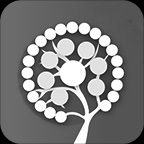Gantt charts have been around for over a century, but they continue to play a valuable role in modern project management — even in agile organizations. In Jira, a Gantt chart offers a visual way to connect short-term sprint work with long-term goals, helping teams and high-level stakeholders see how everything fits together.
Whether you’re coordinating multiple spaces, tracking dependencies, or aligning releases, Gantt charts in Jira provide a timeline view of the work being done.
Why Gantt Charts Still Matter
Agile methodologies focus on flexibility, continuous delivery, and responding to change — yet even agile teams need structure. Gantt charts bring that structure by showing the bigger picture: how sprints, epics, and releases align over time.
They’re especially useful for:
- Cross-team coordination: Visualizing how dependent work streams interact.
- Stakeholder reporting: Communicating progress and delivery timelines at a glance.
- Strategic alignment: Keeping long-term goals visible while teams iterate.
Advantages of Using Gantt Charts in Jira
Using a Gantt chart in addition to your Jira boards provides several advantages:
- Unified timeline: A Jira Gantt chart can combine work items from various spaces, epics, and sprints into one view to see how things align.
- Live data: As Jira work items are updated, the Gantt chart automatically reflects these changes.
- Dependency awareness: Quickly identify which tasks or teams are impacted by changes.
- Clear communication: A visual summary that’s easy for both technical and non-technical stakeholders to understand.
Gantt Charts for Agile Teams
For agile teams, Gantt charts in Jira work best at a higher level:
- Visualize sprints and releases to understand how short-term work supports long-term goals.
- Coordinate between teams working on related epics or features.
- Forecast delivery for stakeholders while maintaining adaptability.
- Track major milestones without micromanaging stories or tasks.
Used this way, Gantt charts enhance — not hinder — agile delivery, offering a strategic view while teams stay focused on iterative progress within their boards. Gantt charts don’t replace agile tools like backlogs or boards — they complement them by adding time-based perspective and clarity.
Gantt Charts in Jira Hybrid Projects
Many teams operate in a hybrid model, blending the structured planning of traditional projects with agile execution. Jira Gantt charts are ideal in this situation because they link detailed task tracking with high-level scheduling, helping teams to:
- Outline major phases and milestones
- Represent sprints as time blocks within broader goals
- Track dependencies and releases across departments
- Communicate progress to leadership while maintaining autonomy at the team level
The result is a shared understanding of both strategy and execution.
How to Use Gantt Charts in Jira
Jira Plans
Jira Plans (formerly Jira Advanced Roadmaps) is included with Jira Premium and Enterprise. It includes a Gantt-like timeline view, complete with support for custom hierarchies, capacity and dependency management.
.png)
Jira Gantt Chart Plugins / Apps
For organizations that aren’t on the Premium or Enterprise plans, you can get a Gantt chart app in the Atlassian Marketplace.
What to Look for in a Jira Gantt Chart App
If you’re shopping for a Gantt Chart app in the Atlassian Marketplace, there are certain things you’ll want to check for:
- All-in-one vs Gantt only – The Marketplace includes Gantt chart apps, as well as apps that combine Gantt charts with other PPM tools. You’ll get more bang for your buck from an app that offers broad planning functionality such as delivery alerts, Gantt charts, capacity planning,
- Live sync with Jira work items – Ideally, the Gantt chart should sync with Jira in real time and allow you to update Jira work item estimates directly from the Gantt interface.
- Shareable views – Gantt charts are especially useful to high level stakeholders who need to see how multiple teams' work fits together. Look for an app that allows you to share views. Bonus points if the view can be shared outside of Jira.
- Runs on Atlassian – The “Runs on Atlassian” badge is shorthand for apps that operate fully within Atlassian’s infrastructure, thereby assuring data privacy and security.
- Installs and reviews – The number of installs a Marketplace app has speaks both to the app's maturity and utility. Likewise, you can benefit from the knowledge of customers who have gone before you by checking the reviews (both the number and the average rating).
Portfolio by HeroCoders (Advanced Edition) meets those criteria, with:
- Multi-space portfolios for a 360° view
- Multiple view options (Table, Gantt, Graph, Pie chart, Tree Map)
- Built-in capacity planner
- Support for custom hierarchies
- Delivery alerts and capacity alerts
Gantt charts remain a relevant PPM tool, allowing project managers to easily visualize time, scope and dependencies. They provide a useful data for high level stakeholders who want to see deliverables without getting bogged down in the details of a Sprint. Gantt charts can serve as a roadmap, helping provide clarity and coordination across multiple Jira projects and teams.









